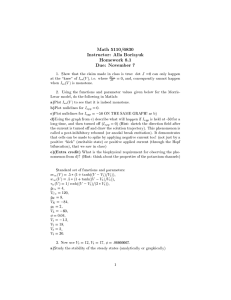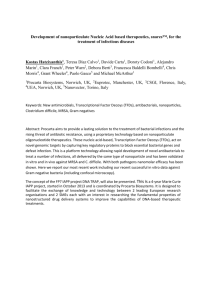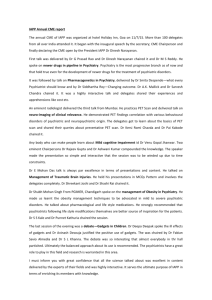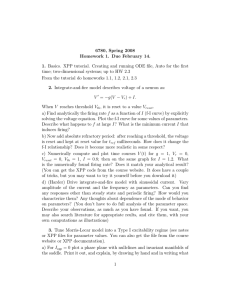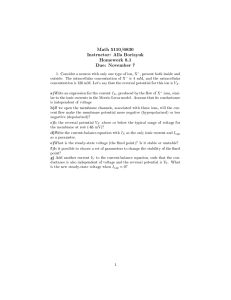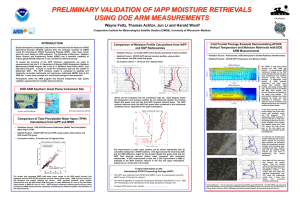Homework 8.1 Solutions Math 5110/6830
advertisement
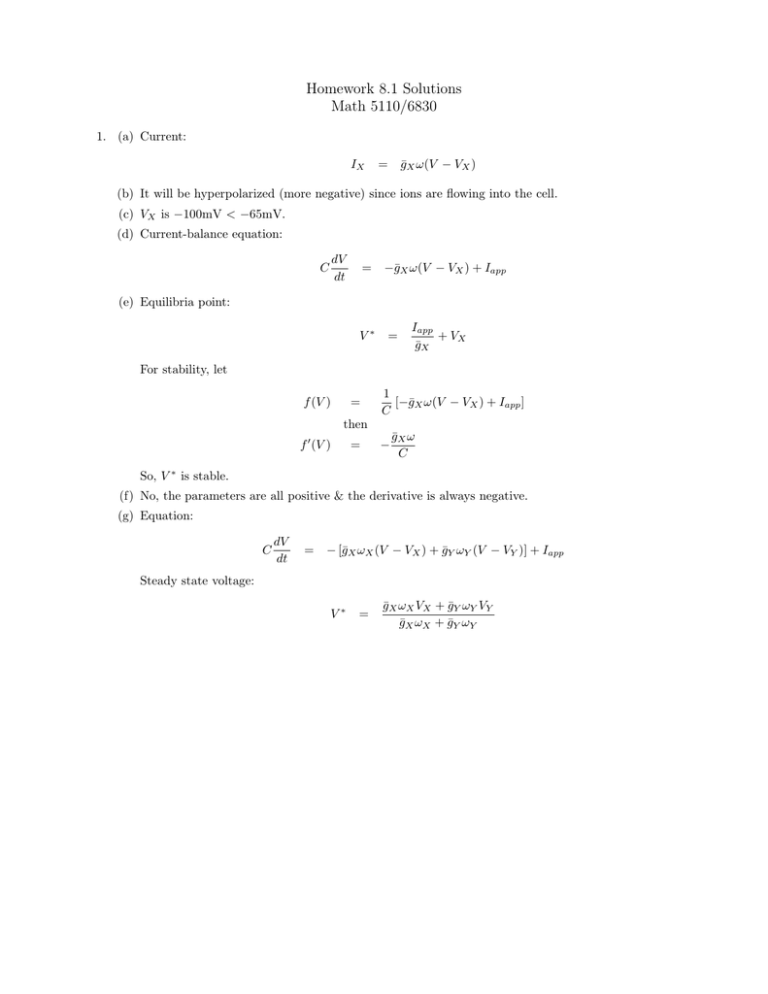
Homework 8.1 Solutions Math 5110/6830 1. (a) Current: IX = ḡX ω(V − VX ) (b) It will be hyperpolarized (more negative) since ions are flowing into the cell. (c) VX is −100mV < −65mV. (d) Current-balance equation: dV dt C = −ḡX ω(V − VX ) + Iapp (e) Equilibria point: V∗ = Iapp + VX ḡX For stability, let f (V ) = 1 [−ḡX ω(V − VX ) + Iapp ] C then 0 f (V ) = − ḡX ω C So, V ∗ is stable. (f) No, the parameters are all positive & the derivative is always negative. (g) Equation: C dV dt = − [ḡX ωX (V − VX ) + ḡY ωY (V − VY )] + Iapp Steady state voltage: V∗ = ḡX ωX VX + ḡY ωY VY ḡX ωX + ḡY ωY Homework 8.2 Solutions Math 5110/6830 1. Recall that Iss (V ∗ ) = Iion (V ∗ , ω ∗ ) − 1c (ḡca m∞ + ḡk ω ∗ + ḡL ) − 1c (ḡk V ∗ − ḡk Vk ) J(V , ω ) = φ ωτ∞ −φ τ1ω ω 1 det(J) = φ [ḡca m∞ + ḡk ω∞ + ḡL + ḡK ω∞ (V ∗ − VK )] τω ∗ ∗ ss If det(J)=0, then ḡca m∞ + ḡk ω∞ + ḡL + ḡK ω∞ (V ∗ − VK ) = 0. Note that dI ḡL . The dV = ḡca m∞ + ḡk ω∞ + dI dIss ∗ only way to satisfy this is to have V = VK and dV = 0. In addition, if Iss is monotone, then dVss > 0 for all V and det(J) 6= 0. 2. (a) Plot of Iss (V ): 1800 1600 1400 1200 Iss 1000 800 600 400 200 0 −200 −100 −80 −60 −40 −20 0 V 20 40 60 80 100 (b) See graph in part (c). (c) Nullclines with Iapp = 0: 0.5 0.4 0.3 w 0.2 0.1 0 −0.1 V−nullcline, Iapp=0 V−nullcline, Iapp=−50 w−nullcline −0.2 0 20 40 60 80 V 100 120 140 (d) If Iapp is held at −50 for sufficiently long, then the solution will approach the new steady state (shown in the figure below); however, once Iapp is turned off then it returns back to the original steady state. 3. (a) Steady states for different values of Iapp : (b) There is clearly a bifurcation happening since we lose/gain equilibria points. As you can see in the following figure, we go from having one equilibria point (Iapp = 50), to having two (not shown here), to having three (Iapp = 0), to again having two (the not shown), and finally one (Iapp = −50). 0.8 0.7 0.6 0.5 0.4 w 0.3 0.2 0.1 0 −0.1 Iapp=0 Iapp=−50 Iapp=50 w−nullcline −0.2 0 20 40 60 80 V 100 120 140
